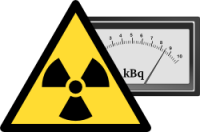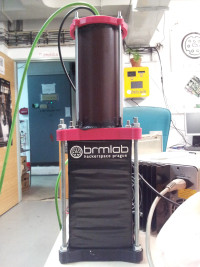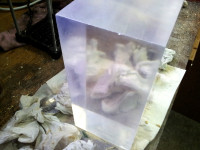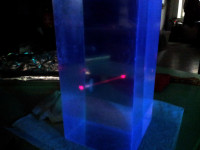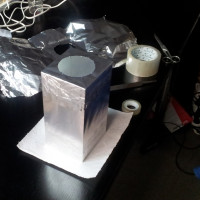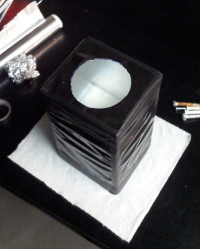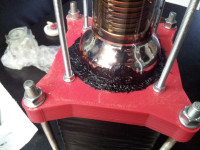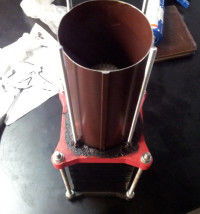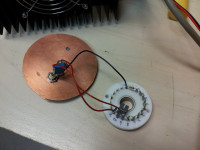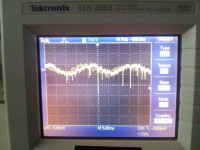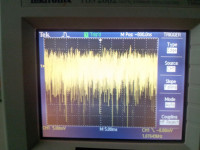Table of Contents
Scintillation counter
~~META: status = terminated &relation firstimage = :project:radiation_measurement.png ~~
Sensitive detector of radiation (mainly beta and gamma).
TODO
- dedicated voltage source
- dedicated electronics for singnal acquisition
- amplifier
- AD converter
- evaluate software (counter, try spectroscopy etc.)
Schematics and specifications
- Photomultiplier: is made by Tesla, the type is unknown.
- Scintillator: is a block of plastic material named SP32. It is made out of para-terphenyl with POPOP (1,4-bis-(5-phenyl-2-oxazolyl)-benzene) solved in stirene, elmuSSo is used as condenser.
Building workflow
Step 1 - polishing FAG
FAG, the block of plastic used as scintillator, it's surface contained some unevenness from cutting process.
The goal of polishing is to make the surface flat and transparent. Abrasion was made by sanding and then polishing paste. All abrasion was made with water due to cooling. But some overheating was not avoided and minor fractures occured.
Polished FAG glows nice in UV radiation, red LASER added for effect.
Step 2 - wrap FAG in aluminium
Polished FAG was wrapped into aluminium foil (2 layers) and black plastic plastic (2 lyers) using black sellotape. On the top remains a hole for photomultiplier.
Step 3 - framing
Finished scintillator with shielding was put into prepared frame. Frame is made from threaded rod and plastic part printed on RepRap.
Step 4 - attaching photomultiplier
Photomultiplier is attached to the scintillation plastic by some kind of very viscous silicone oil in order to keep good optical contact. Bitumen was put betwen the frame and photomultiplier, it keeps the photomultiplier in place and stops any light from outside. Last step was imbed covering tube for photomultiplier, this was made from metal drain pipe. Final step is attaching electronic interface and top cover. All wraped in black sellotape.

